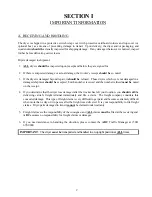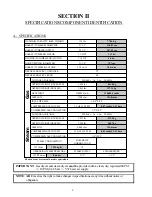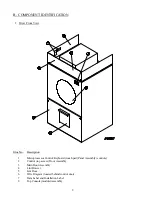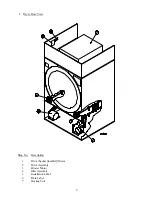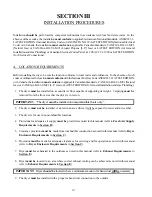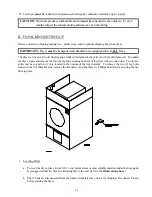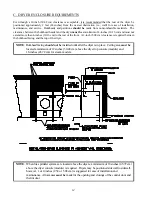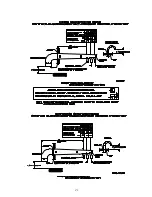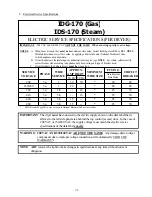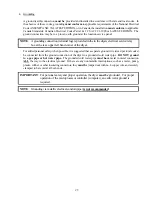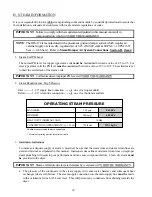
17
a. Outside Ductwork Protection
1) To protect the outside end of the horizontal ductwork from the weather, a 90° elbow bent downward
should be
installed where the exhaust exits the building. If the ductwork travels vertically up
through the roof, it
should be
protected from the weather by using a 180° turn to point the opening
downward. In either case, allow at least twice the diameter of the duct between the duct opening
and the nearest obstruction.
IMPORTANT
:
DO NOT
use screens, louvers, or caps on the outside opening of the exhaust
ductwork.
2. Single Dryer Venting
Where possible, it is suggested to provide a separate exhaust duct for each dryer. The exhaust duct
should
be
laid out in such a way that the ductwork travels as directly as possible to the outdoors with as few turns
as possible. It is suggested that the use of 90° turns in the ducting be avoided; use 30° and/or 45° angles
instead. The shape of the exhaust ductwork is not critical so long as the minimum cross section area is
provided.
IMPORTANT
: The minimum duct size is 18-inches (45.72 cm) for a round duct 16-inches x
16-inches (40.64 cm x 40.64 cm) for a square duct.
THE DUCT SIZE
MUST
NOT
BE REDUCED ANYWHERE DOWNSTREAM OF THE DRYER
.
IMPORTANT
: Exhaust back pressure measured by a manometer at each basket (tumbler) exhaust
duct area
must be
no less than 0 and
must not
exceed
0.3 inches (0.74 mb) of water
column (W.C.).
Summary of Contents for ID-170
Page 25: ...21 ...
Page 55: ...ADC 113331 1 08 27 01 25 ...

